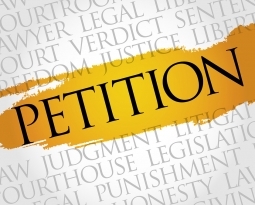New York child support: Understanding your obligations
Every parent has a moral and legal obligation to provide for their children financially. Divorce does not change this commitment, which is why non-custodial parents are required to pay child support to their former spouse for the benefit of the children.
Last month, the New York Child Support Standards Chart for 2017 was released. It serves as a means of calculating how much each parent is required to pay toward the financial support of their children. Applied to combined incomes between the poverty line and $143,000, it assigns a fixed percentage to this gross income total, with the amount varying according to how many children require support. For one child, it is 17%. Others are as follows:
- 25% for two children
- 29% for three children
- 31% for four children
- At least 35% for five or more children
Who pays how much?
After gross income is determined, necessary and nondiscretionary expenses are deducted, such as FICA taxes, New York City and Yonkers income taxes, union dues, or child support or alimony from a previous relationship. Then the required statutory percentage is applied: for example, supporting two children calls for 25% of the combined parental income. If both parents make $75,000 combined, then $18,750 per year is earmarked for child support. Next, the court determines each parent’s prorated share by dividing their child support income by the combined total household income.
Here’s a real life scenario:
A divorced couple made $75,000 as a household after all necessary deductions. The mother, who has custody of their two children, made $30,000 while the father made $45,000. Her contribution was 40% of the total income while her husband’s was 60%. Since $18,750 per year is legally required to support two children in a $75,000 income family (see above), the father is responsible for $11,250 per year, or 60% of the total. He would, therefore, pay his ex-wife $937.50 per month ($11,250 divided by 12 months).
For higher-income households that earn more than $143,000, the court may either use the percentages outlined above or consider individual factors such as parental income, lifestyle, and any special needs of the child to arrive at a support amount.
Evading Responsibilities
Unfortunately, some parents attempt to evade responsibility by remaining chronically unemployed or underemployed. When a judge has good reason to believe that this is occurring, they may impute an income amount based on previous work history and other factors. If a parent actively refuses to pay, then the Child Support Enforcement Bureau can garnish their wages, seize portions of unemployment benefits or a tax refund, and even freeze a non-payor’s bank accounts. The delinquent parent could lose their driver’s license, or any state license and even go to jail for wilfully refusing to obey a court order.
If you have questions about support obligations or modifying an existing support order, then contact a New York family law attorney who can advise you on the best strategy for paying or receiving the child support amount that is fair under all applicable circumstances. The attorneys at Eskin & Eskin, P.C. provide compassionate legal representation to clients with family court matters. They also represent clients in divorce cases. For a free consultation, call 718-402-5204. Visit www.EskinAndEskinLaw.com to learn more.





